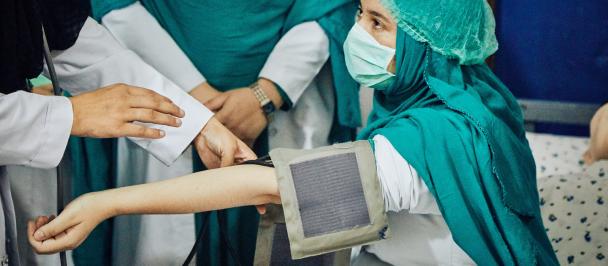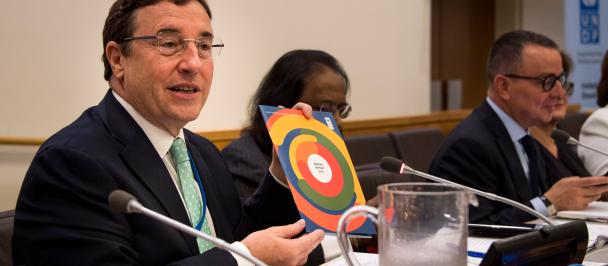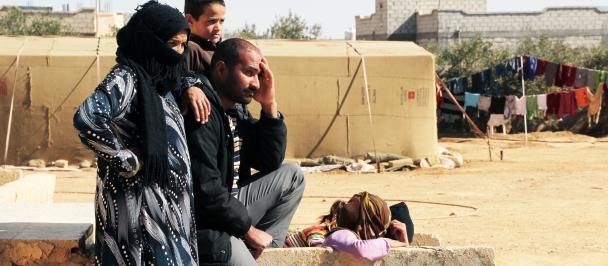This year is a turning point for the world. It simply must be. We have just over 10 years to set the world on a more peaceful, equitable and sustainable path, with an international community working together to tackle climate change.
At this time of fluidity in the international system, when isolationist sentiment is growing, it is more crucial than ever to work in an integrated way on development. The reasons are simple. They are the same reasons that we hold on to the ideals of the United Nations and the sentiments conveyed in the UN Charter. The only way to navigate through this pivotal decade is to successfully work together. This spirit of cooperation will be critical if we are to achieve all 17 Sustainable Development Goals (SDGs) by 2030.
The UN System plays a key role in driving the essential sustainable development that allows so many to build a brighter future. The concrete results achieved by the UN every day clearly show the power of cooperation and engagement. But what does this actually look like?
The UN is striving to eradicate poverty in all its forms and dimensions. In 2018, 31 million people had better access to basic services – from water to energy to finance – through support provided by UNDP, the UN’s development arm.
It is essential for the UN to not merely be reactive but to build resilience to shocks and crises. Much of the UN’s work centres on accelerating critical structural transformations for sustainable development. Last year alone, 21 million people were registered to vote, 48 per cent of them women; while four million people living in (or recovering from) crisis got a job or improved their livelihood through UNDP engagement.
As these examples demonstrate, 2018 was another remarkable year for the UN. It was a year of reform and transition to allow the UN System to provide even better results to the communities we serve. For UNDP, it was a year that marked the emergence of a modern, results-oriented, next-generation organisation, which achieved its highest programme delivery in five years – even while powering the repositioning of the UN Development System. This involved several elements, not least the emergence of a new generation of Country Teams, designed with the main purpose of accelerating progress on the SDGs.
Our concrete results were largely achieved by listening closely to the needs of the developing countries, their communities and our Member States. This feedback has also guided UNDP’s Strategic Plan 2018–21. This sets out a vision for the continued evolution of UNDP over the next four years, given the changing development landscape and the evolving needs of our partners to achieve the 2030 Agenda. UNDP’s new ‘integrator’ mandate at the country-level will also help to streamline UN services and platforms to accelerate progress on the SDGs.
UNDP itself is launching new ‘Accelerator Labs’ in 60 developing countries in 2019 to identify and quickly scale up local solutions – in renewable energy, for instance – which can further support the SDGs.
For 2019, I have set out three priorities for UNDP. This guidance aims to make UNDP work even better, as part of a more integrated, holistic approach with both our UN and other multilateral partners.
1. Climate change
We are facing more and more extreme weather events, droughts, floods, rising sea levels, diminishing polar ice, ecosystem collapse and declining crop yields. These will impact communities, particularly the poorest and most vulnerable, and threaten livelihoods. UNDP is the largest implementer of climate action in the UN System. We will continue to provide this long-standing expertise while working to double our support for the integrated implementation of the nationally determined contributions (NDCs) at the heart of meeting the Paris Agreement. Our work in over 140 countries aims to reduce emissions and increase resilience to the impact of climate change.
The world’s leading climate scientists from the UN’s Intergovernmental Panel on Climate Change say that we only have until 2030 to stop the planet warming above 1.5°C. After that, it may be impossible to reverse the effects of climate change. Recognizing that time is running out, UN Secretary-General António Guterres has convened a crucial Climate Action Summit in September. He has asked world leaders to bring concrete plans – not mere speeches.
2. Inequality
Inequalities – between and within countries – are on the rise. Today, 42 individuals own as much wealth as the poorest 3.7 billion people. High levels of inequality are detrimental to economic growth, undermine poverty reduction, increase political and social tensions, and drive instability and conflict.
Much of UNDP’s work on poverty eradication and implementation of the SDGs focuses on reducing inequalities, be they between men and women or between people with disabilities and others. Bridging the inequality gap is enshrined in the 2030 Agenda and its central pledge to ‘leave no one behind’.
UNDP is pushing forward new ways to consider how we measure inequality to re-articulate human development for today’s world. We need new metrics that take a long-term view to go beyond GDP and beyond averages, to allow us to design better policies to tackle inequality.
3. Migration
UNDP brings a central perspective and approach to the issue of migration: that of sustainable development. Our focus is on tackling the drivers and root causes that lead people to leave their home countries. These include poverty, inequality, climate change, conflict and poor governance.
Such work is critical given global instability. There has been a 300 per cent rise in the number of major conflicts since 2010, while such conflicts caused a record 70 million people to be displaced from their homes in 2018. UNDP’s work on migration is also linked to change and inequality. By addressing the root causes and drivers of migration, we can help to ensure that people do not decide to leave, or are not forced to leave, their homes.
Results through collaboration
The UN’s long-term engagement to support countries on their sustainable development pathways has generated deep-rooted trust in governments and in the local populations we serve. Our dedicated staff, with nuanced local expertise, work where many other actors do not want to tread. UNDP itself works in 170 countries, identifying both key risks and opportunities for the entire development community. It could not achieve such results without the critical cooperation of its multilateral partners.
Political commitment to cooperation and engagement are critical to achieving the SDGs. When we come together, the results on the ground are there for all to see. In this respect, this publication provides a clear added-value with its new, innovative and timely insights from leading experts in their fields. The contributors shed light on both the results achieved through multilateralism and how the SDGs can accelerate progress on the 2030 Agenda to address the biggest international challenges of our time.
There is no time left for indecision, nor for being overwhelmed by obstacles. There is only time for courage and to come together as part of a stronger multilateral system.
We may only have a decade to change the world. However, the people that are the United Nations can be relied upon to lead from the front, in a spirit of cooperation, to forge a more peaceful, fairer and more sustainable world.
This blog was originally published here.

 Locations
Locations


